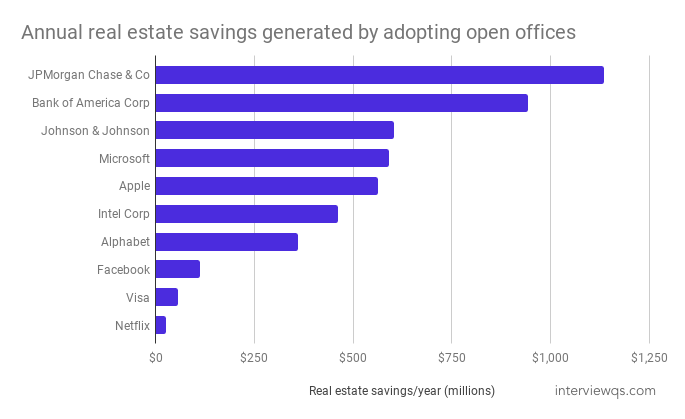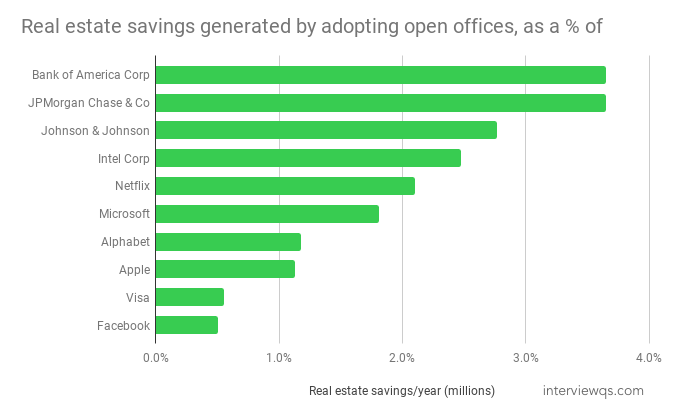Why Offices Are Becoming More 'Open'
An analysis of why companies are moving toward open offices, highlighting shrinking office space per employee and the cost savings driving the trend.
Office space per person is shrinking
Offices have gotten more crowded 'open' in recent years, with the average square feet per person shrinking ~33% from 225 in 2010 to just ~150 in 2017. This can generally be attributed to companies adopting 'open offices', citing benefits of 'increased productivity/collaboration/face time'.
Of course, there are plenty of studies analyzing the effect open offices have on worker productivity, with generally negative results. Despite the research, companies are still marching towards increasingly crowded 'open' offices. Why?
As mentioned, average square feet per person in an office has dropped from 225 feet to 150 feet. This shrinkage in space directly translates to real estate cost savings for companies. Conversely, it's difficult to pin down the $ impact open offices are having on a given company's output, despite the studies showing that it's making folks less productive. In other words, we can't say "because of open office productivity decline, Company ABC is generating X% less profits than it would under a closed office scenario", but we can say "if we adopt an open office, we'll save a ton on real estate costs".
How much money are companies saving by using open offices?
I get into detail down at the bottom for those curious, but we can estimate this by multipying 3 variables together:
(Square feet per person saved via open offices * # of employees * Cost/square foot of office space)
Using this formula, we are able to estimate savings tied to open offices for a few of the larger companies in the S&P 500:
Total amount of money saved/year by opting for open offices:
Open office savings as a % of annual profit:
As we can see, the largest companies are saving 100s of millions per year in office space expenses by offering less square footage per person, resulting in multiple % points of extra profit. To put this into a larger context, if we carry forward 1% open office profit savings across all companies in the S&P 500 (w/ 25 million employees), that translates to over $200B/year in extra profits! Not all companies in the S&P 500 necessarily have open offices, but this shows the magnitude of the potential cost savings.
Based on this, we can see see a clear, quantitative incentive for companies to 'open' their offices up. Whether or not these real estate savings are offset by reduced productivity or increased employee attrition is something that remains to be seen.
Footnotes/assumptions:
Cost savings = (75 square feet per person saved by using open office$50/square foot annual office cost*# employees)*
Assumes all employees (as defined in company financial data) occupy office space. Of course, some employees are in the field or working remotely and don't necessitate office space. However, I'm also only counting employees in this analysis (e.g., excluding temps/vendors who often occupy office space as well), so this should provide a good approximation.
Assuming annual office space cost of $50/square foot. Depending on the city, whether company owning or renting, the type of building, that # may skew higher or lower.


